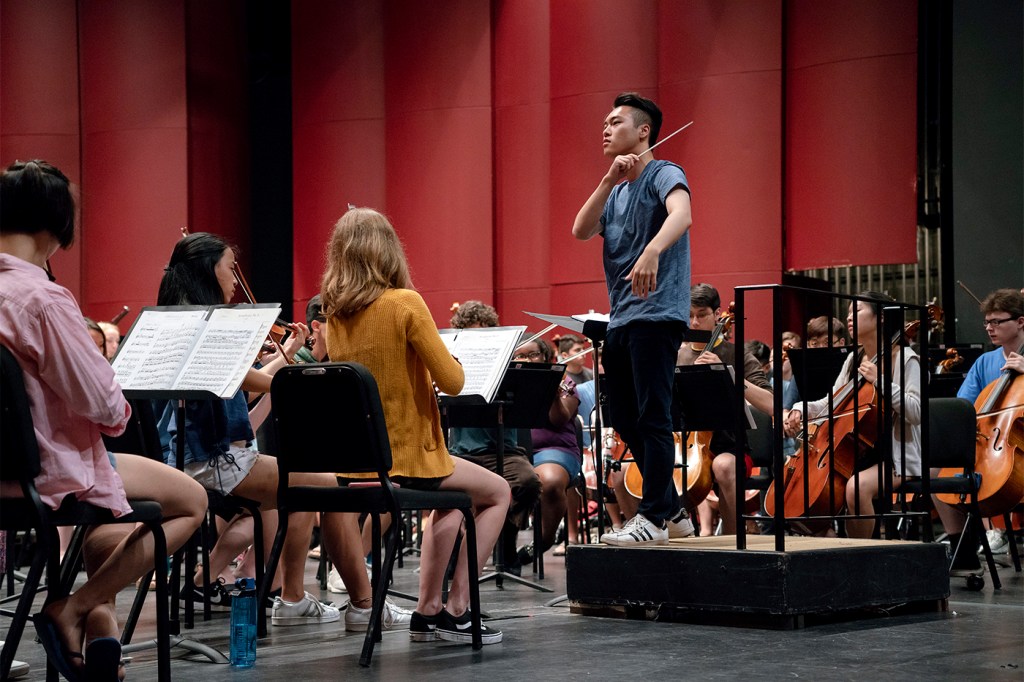Northeastern student, apprentice conductor, is ‘building community’ within National Youth Orchestra

Richard Kaminuma has learned that conducting is an act of faith as much as preparation.
The Northeastern student, who has been playing piano since he was 4 years old and violin since he was 9, is one of two conducting apprentices this year for the National Youth Orchestra of the United States of America, a highly-selective group of 106 teenage musicians that’s embarking on a world tour this month.
Kaminuma has played violin with the Boston Youth Symphony, and currently plays with the Boston Youth Philharmonic and the Northeastern University Symphony Orchestra. But for the past several weeks he’s been working intensely with the professional- and youth musicians of the National Youth Orchestra to prepare for a performance at the famed Carnegie Hall on Thursday, followed by performances in Taiwan, China, and South Korea.
He’s also been studying privately with the National Youth Orchestra conducting staff to understand the mechanics of music scores and learn more about the conductor’s role in an orchestra in general.
Kaminuma is studying under renowned conductor Michael Tilson Thomas, an 11-time Grammy Award winner who leads the San Francisco Symphony.
His first rehearsal with Thomas was “eye-opening,” Kaminuma said.
Conducting is such an interesting field because you’re helping lead the music without actually making any noise yourself.
Richard Kaminuma, Apprentice conductor
“It made me really understand why a musician like that is so revered, because he was able to take an already-outstanding orchestra to even higher levels,” he said. “He knew exactly what he wanted to hear. It was a masterclass in exactly what conducting is.”
That sort of leadership demands a delicate balance of control and trust.
“Conducting is such an interesting field because you’re helping lead the music without actually making any noise yourself,” Kaminuma said. “The most important thing I’ve learned is to trust the musicians to play the best version of the music. It was learning to let go and make music with the orchestra instead of trying to control everything.”
Like their locomotive counterparts, music conductors are in charge of running the orchestra. They set the speed of the music and can decide which parts of the piece to emphasize. Unlike a train, though, an orchestra can also run itself. This makes the role of the conductor a bit more nebulous, Kaminuma said.
But what he knows for sure is that conducting “feeds off the same part of the brain that is interested in leadership, teamwork, and communication on a large scale”—all skills he’s working to hone in his business management courses in the D’Amore-McKim School of Business. “It’s all borne of the same ambition,” he said.





